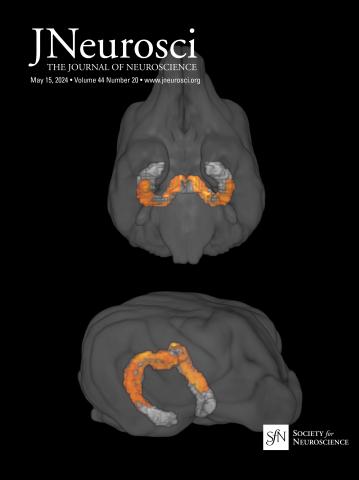Neural signatures of flexible multiple timing.
IF 4
2区 医学
Q1 NEUROSCIENCES
引用次数: 0
Abstract
The human ability to track overlapping and asynchronous time intervals is crucial for a myriad of tasks, from engaging in conversation to driving a car. Additionally, unexpected events can trigger rapid, on-the-fly adjustments, necessitating quick updating of both timing intervals and action planning. Such events require immediate recalibration of decision variables to allow the system to promptly adapt to new stimuli and update the timing mechanisms accordingly. In this study, we assessed human male and female participants' ability to track two simultaneous and asynchronous beep trains and determine which one ended first. Due to the stochastic nature of the beeps, participants frequently had to reorient their intended actions in order to identify which train was more likely to have ended. We found that they were able to do this accurately, demonstrating timing performance that was comparable to that of a single train. At the neural level, we recorded slowly evolving EEG potentials that encoded a single interval, the one associated with the currently intended action. Upon an intention switch, when participants had to reorient to a previously unintended action, the EEG response amplitude was reset to reflect the new intended interval. In contrast, when participants were instructed to disregard one of the beep trains, EEG responses solely reflected the intervals of the sequence they attended to. This flexibility in response highlights the brain's ability to dynamically reconfigure cognitive processes in real-time, ensuring that actions remain contextually appropriate despite sudden changes in the environment.Significance statement The human brain exhibits a remarkable ability to track temporal patterns and rapidly adjust timing and action plans in response to unexpected events. Using a novel task, we show that humans can flexibly process two independent, asynchronous sound trains and accurately determine which ends first. The unpredictable nature of the stimuli required frequent shifts in participants' intentions and adjustments in timing. EEG recordings reveal neural signals that mirror this adaptability, dynamically aligning with behavioral changes. These findings highlight the brain's capacity for real-time cognitive flexibility in response to sudden environmental changes, offering new insights into the mechanisms of complex timing behavior.柔性多定时的神经特征。
人类追踪重叠和异步时间间隔的能力对于从参与谈话到驾驶汽车等无数任务至关重要。此外,意外事件可能触发快速的动态调整,需要快速更新时间间隔和行动计划。此类事件需要立即重新校准决策变量,以使系统能够迅速适应新的刺激并相应地更新定时机制。在这项研究中,我们评估了人类男性和女性参与者跟踪两组同步和非同步哔哔声的能力,并确定哪一组哔哔声先结束。由于蜂鸣声的随机性,参与者经常不得不重新调整他们的预期行动,以确定哪列火车更有可能已经结束。我们发现他们能够准确地做到这一点,展示出与单列火车相当的计时性能。在神经层面,我们记录了缓慢发展的脑电图电位,这些电位编码了一个单一的间隔,与当前预期的动作相关。在意图转换时,当参与者必须重新定位到先前无意的动作时,脑电图反应幅度被重置以反映新的预期间隔。相比之下,当参与者被指示忽略其中一个哔哔序列时,脑电图反应仅反映了他们所关注的序列的间隔。这种反应的灵活性突出了大脑实时动态重新配置认知过程的能力,确保在环境突然变化的情况下,行动仍然符合上下文。人类的大脑显示出一种非凡的能力,可以追踪时间模式,并迅速调整时间和行动计划,以应对意外事件。通过一个新的任务,我们展示了人类可以灵活地处理两个独立的、异步的声音序列,并准确地确定哪个先结束。刺激的不可预测性要求参与者频繁改变意图和调整时间。脑电图记录显示,神经信号反映了这种适应性,与行为变化动态一致。这些发现强调了大脑在应对突发环境变化时实时认知灵活性的能力,为复杂时间行为的机制提供了新的见解。
本文章由计算机程序翻译,如有差异,请以英文原文为准。
求助全文
约1分钟内获得全文
求助全文
来源期刊

Journal of Neuroscience
医学-神经科学
CiteScore
9.30
自引率
3.80%
发文量
1164
审稿时长
12 months
期刊介绍:
JNeurosci (ISSN 0270-6474) is an official journal of the Society for Neuroscience. It is published weekly by the Society, fifty weeks a year, one volume a year. JNeurosci publishes papers on a broad range of topics of general interest to those working on the nervous system. Authors now have an Open Choice option for their published articles
 求助内容:
求助内容: 应助结果提醒方式:
应助结果提醒方式:


